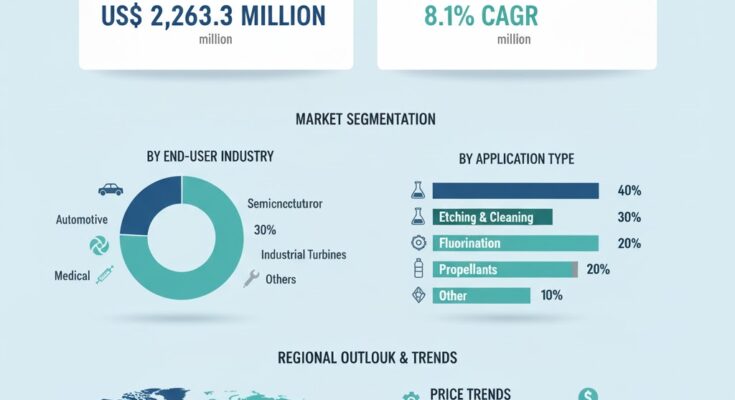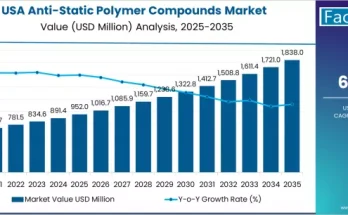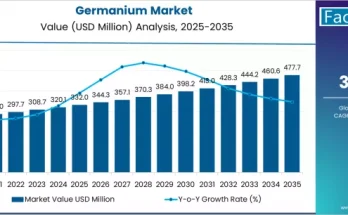The global elemental fluorine market is on a robust growth path, propelled by rising applications in semiconductor manufacturing, chemical synthesis, and environmental technologies. According to a recent report by Fact.MR, the market is estimated to reach US$ 1,011.7 million in 2024 and is projected to attain US$ 2,263.3 million by 2034, expanding at a CAGR of 8.1% during the forecast period.
As industries pursue greater energy efficiency, sustainable refrigerants, and precision manufacturing processes, elemental fluorine has emerged as a key enabler. Its role in producing high-performance materials, specialty chemicals, and eco-friendly substitutes positions it as a critical input across multiple sectors.
Strategic Market Drivers
Surging Demand from the Electronics and Semiconductor Sector
The rapid growth of the semiconductor industry is a major catalyst for the elemental fluorine market. Used in plasma etching and cleaning processes, fluorine ensures high precision and defect-free wafer surfaces. With the expansion of 5G technology, electric vehicles, and AI-driven computing, demand for fluorine-based plasma gases continues to soar.
Adoption in Eco-friendly Refrigerants and Blowing Agents
Global efforts to phase down ozone-depleting substances are boosting demand for hydrofluoroolefins (HFOs) and other low-GWP (Global Warming Potential) alternatives. Elemental fluorine plays a central role in synthesizing these refrigerants, helping manufacturers meet international environmental standards like the Kigali Amendment.
Chemical Processing and Energy Applications
Elemental fluorine is a key raw material for producing uranium hexafluoride used in nuclear fuel processing and lithium hexafluorophosphate for EV batteries. Its application in advanced energy storage technologies and high-performance polymers like PTFE and PVDF underscores its strategic importance in the global energy transition.
Technological Advancements in Production and Handling
Advancements in electrolysis and on-site fluorine generation have significantly improved safety, efficiency, and cost-effectiveness in production. These innovations allow for customized, large-scale supply of ultra-pure fluorine gas for semiconductor fabs and chemical plants.
Regional Growth Highlights
East Asia: The Manufacturing Hub
East Asia dominates the global elemental fluorine market, driven by strong semiconductor and electronics manufacturing ecosystems in China, Japan, and South Korea. Increasing investments in chip fabrication and chemical production facilities have made the region a cornerstone for fluorine-based materials.
North America: Expanding Applications in Clean Energy and Refrigerants
The U.S. and Canada are witnessing growing demand for elemental fluorine due to the adoption of clean refrigerants and renewable energy technologies. The presence of key chemical producers and regulatory push for sustainable manufacturing is strengthening regional market dynamics.
Europe: Sustainability and Technological Leadership
Europe’s stringent environmental regulations and investments in fluorine chemistry innovation are fueling market expansion. Countries such as Germany, Belgium, and France are key centers for chemical innovation and specialty gas production.
Emerging Markets: Growth in India and the Middle East
Rising industrialization and growing demand for advanced materials are expanding market opportunities in India and the Middle East. Local production initiatives, including those by Navin Fluorine and Gulf-based chemical firms, are reinforcing regional supply chains.
Market Segmentation Insights
By Application
- Semiconductors and Electronics: Primary demand segment for etching and cleaning gases.
- Chemical Manufacturing: Used in producing fluorinated intermediates and high-performance polymers.
- Refrigeration and HVAC: Key role in eco-friendly refrigerant synthesis.
- Energy and Nuclear Processing: Utilized in lithium and uranium compounds for batteries and fuel cycles.
By End-use Industry
- Electronics & Semiconductors
- Chemicals & Petrochemicals
- Energy & Power
- Refrigeration & HVAC
- Automotive (EV Batteries and Coatings)
Challenges and Market Considerations
- Handling and Safety Concerns: Elemental fluorine’s highly reactive nature requires specialized containment and transport systems.
- High Production Costs: Advanced electrolysis and purification systems add to the capital expenditure for producers.
- Environmental and Regulatory Compliance: Producers must adhere to stringent safety and emission standards across jurisdictions.
- Supply Chain Complexity: Dependence on high-purity raw materials and specialized logistics remains a constraint in emerging regions.
Competitive Landscape
The elemental fluorine market is moderately consolidated, with leading players investing heavily in R&D, safety innovation, and strategic collaborations. Companies with diversified product portfolios catering to multiple industries are gaining a competitive edge.
Key Companies Profiled:
- Advance Research Chemicals Inc.
- Air Products and Chemicals, Inc.
- Kanto Denka Kogyo Co. Ltd.
- Linde AG
- Navin Fluorine International Limited
- Pelchem SOC Ltd.
- Solvay SA
- F2 Chemicals Ltd.
Solvay SA stands out for its extensive fluorine-based chemical portfolio, serving electronics, energy, and materials industries.
In July 2022, Navin Fluorine International Limited began production of Honeywell’s Solstice ZD, a next-generation hydrofluoroolefin (HFO), in Delhi, India. This refrigerant is designed for chillers, foam insulation, and solvents—enhancing energy efficiency while reducing environmental impact.
Future Outlook: Toward a Sustainable and High-Performance Chemical Economy
The next decade marks a pivotal phase for the elemental fluorine industry as global manufacturing shifts toward sustainability, miniaturization, and electrification. Increasing demand for semiconductors, EV batteries, and eco-friendly refrigerants will sustain long-term market momentum.
Producers focusing on technological advancement, environmental compliance, and localized production are set to lead the market transformation. With expanding industrial applications and continuous innovation, elemental fluorine is poised to become a cornerstone of the next-generation chemical economy.



